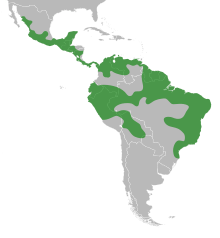| Platymiscium | |
|---|---|
 | |
| Platymiscium stipulare | |
| Scientific classification | |
| Kingdom: | Plantae |
| Clade: | Tracheophytes |
| Clade: | Angiosperms |
| Clade: | Eudicots |
| Clade: | Rosids |
| Order: | Fabales |
| Family: | Fabaceae |
| Subfamily: | Faboideae |
| Tribe: | Dalbergieae |
| Genus: | Platymiscium Vogel |
| Species | |
See text. | |
 | |
| Range of the genus Platymiscium. [1] | |

Platymiscium is a genus of flowering plants in the family Fabaceae, and was recently assigned to the informal monophyletic Pterocarpus clade within the Dalbergieae. [2] [3] It has a Neotropical distribution, from northern Mexico to southern Brazil. Platymiscium is the only genus in the family with opposite leaves in all its species. Its wood has various uses, mostly for constructions and furniture. The wood is also sometimes referred to as Granadillo, Macacauba, Macawood, Hormigo, or Orange Agate.[ citation needed ]